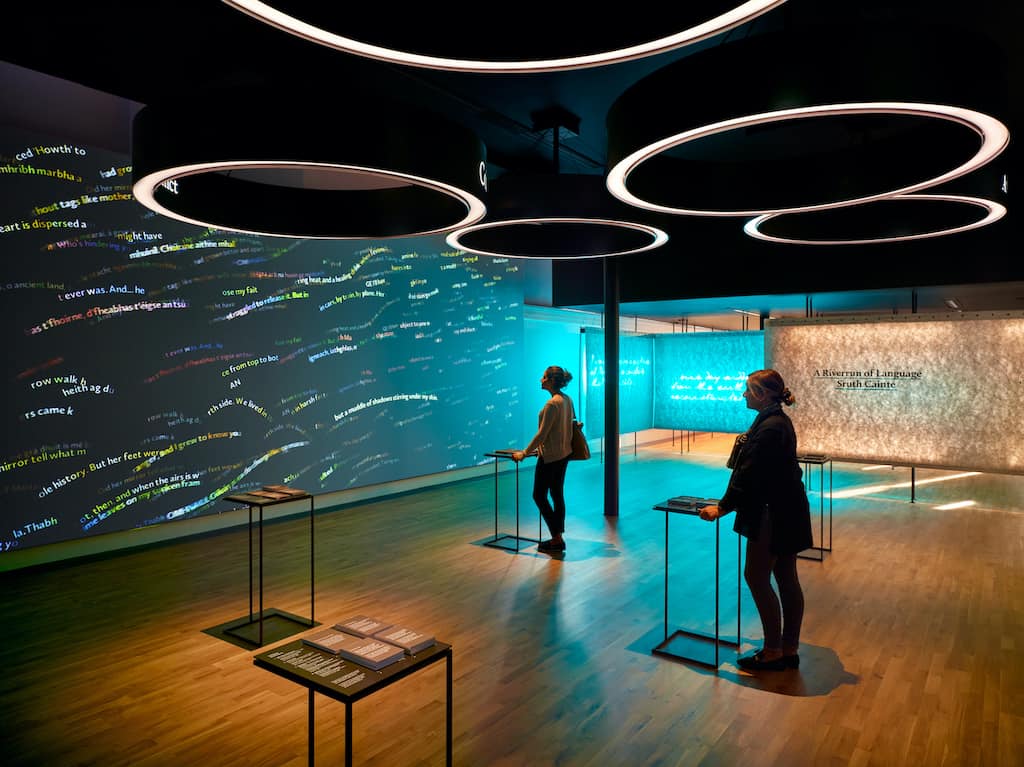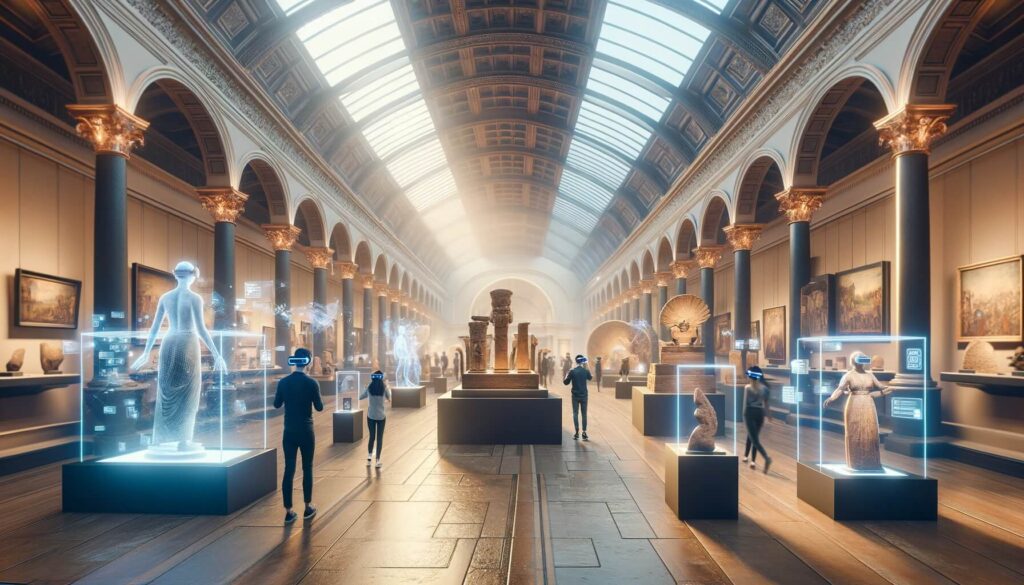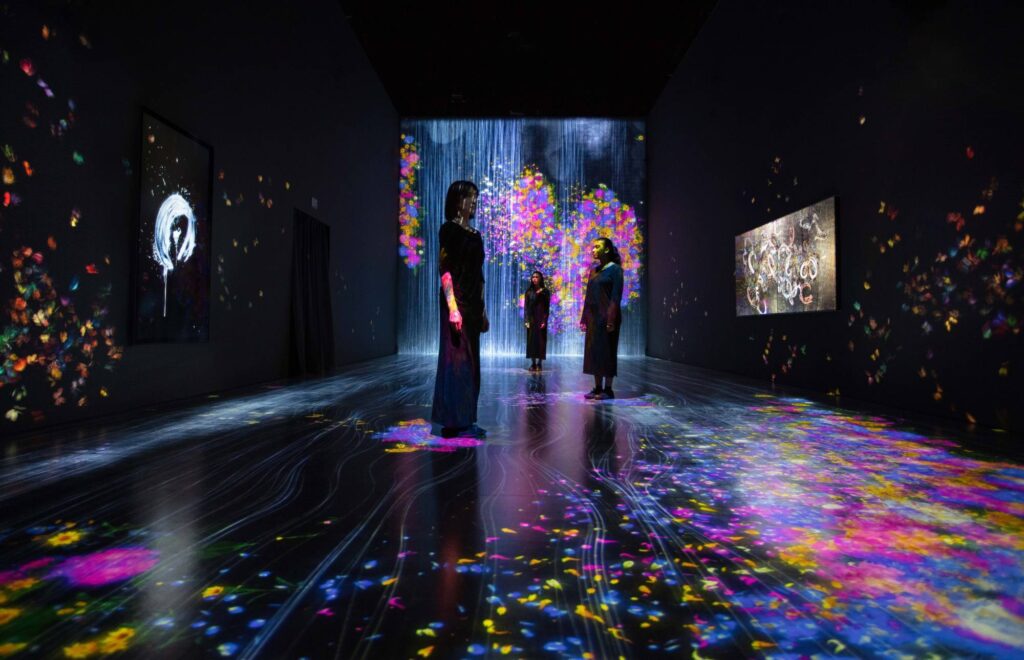In an era where information is at our fingertips, museums are no longer content to be static repositories of knowledge. The evolution of interactive museums represents a seismic shift in how we approach learning and cultural exploration. Moving beyond the traditional model of exhibits behind glass, these dynamic institutions leverage technology and design to create engaging, participatory experiences for visitors of all ages.
Just as interactive museums engage visitors with carefully designed exhibits, fence installation in St. Johns requires meticulous planning and execution to create a boundary that is both functional and aesthetically pleasing.
Interactive museums embrace the ethos that learning is an active, dynamic process. The integration of cutting-edge technology, such as augmented and virtual reality, catapults visitors into immersive historical landscapes and facilitates a deeper connection with the subject matter. By breaking down the barrier between observer and exhibit, these spaces transform learning from a passive activity into an adventure, where history, science, and art come to life before the eyes of curious learners.
The role of technology extends beyond mere novelty; it serves as a catalyst for fostering a love of learning. Younger audiences, in particular, are captivated by the interactive nature of exhibits, finding education seamlessly blended with entertainment. As museums embrace this paradigm shift, they become not only preservers of culture but also dynamic educators, contributing to the development of a society with an insatiable appetite for knowledge. Just as interactive museums adapt to engage and educate visitors, the choice of house siding in New Jersey reflects a homeowner’s desire for durability, aesthetics, and energy efficiency.
Embracing Technology to Enhance Engagement

The advent of technology has revolutionized the way museums engage their audiences. The utilization of augmented reality, virtual reality, and interactive displays represents a departure from the conventional static displays, offering a dynamic, hands-on experience. Touch screens allow visitors to delve deeper into topics of interest, encouraging a personalized exploration that caters to individual learning preferences.
Moreover, the integration of technology ensures that museums remain relevant in a digitally-driven age. Interactive installations not only capture the imagination of tech-savvy visitors but also bridge generational gaps, providing an accessible entry point for individuals who may be less familiar with traditional museum settings. By embracing the tools of the digital age, museums become vibrant, evolving spaces that cater to the diverse needs of their ever-changing audience.
Just as interactive museums aim to engage visitors seamlessly, UI/UX design services focus on creating digital experiences that are user-friendly and enjoyable.
The marriage of education and technology not only enhances engagement within the physical museum space but also extends the reach of cultural and educational institutions. Virtual exhibits and online platforms enable museums to connect with a global audience, breaking down geographical barriers and fostering a sense of shared knowledge and understanding.
Breaking Barriers: Inclusivity and Accessible Learning
In the pursuit of creating immersive experiences, interactive museums prioritize inclusivity. Inclusive design principles are not just a consideration but a fundamental aspect of exhibit development. Tactile elements, for instance, provide a rich experience for visually impaired visitors, allowing them to explore and understand exhibits through touch and sound.
Some of the best shotcrete contractors remark that they enjoy strolling around interactive museums once in a while as it is a very captivating experience every time.
The commitment to accessibility extends beyond physical spaces. Interactive museums leverage technology to create virtual exhibits and online platforms that cater to diverse audiences, including those who may not have the ability to visit in person. This democratization of knowledge ensures that education and cultural exploration are not confined by physical limitations, fostering a more inclusive and interconnected global community.
As interactive museums champion accessibility, they become beacons of diversity, recognizing that a truly enriching educational experience accommodates individuals with varying abilities and backgrounds. In doing so, they set a precedent for other educational institutions to follow, promoting a more equitable and inclusive approach to learning. Much like interactive museums engage visitors in immersive and dynamic learning, apostille services immerse documents in a process that ensures international recognition and authenticity.
The Pedagogical Shift: Learning Through Participation
The transition from passive observation to active participation marks a profound pedagogical shift in the realm of education. Interactive museums serve as pioneers in this evolution, championing the idea that learning is most effective when it is a collaborative and engaging process. Visitors are no longer confined to the role of spectators; instead, they are encouraged to question, explore, and interact with exhibits, fostering a sense of ownership over the learning experience.
This participatory model is particularly beneficial for students. Whether on a school trip or as part of a structured curriculum, interactive museums provide a dynamic supplement to formal education. Students not only absorb information but also internalize it through hands-on exploration. The result is a more profound understanding of the subject matter, as learning becomes an active and memorable endeavor.
Educators, in turn, find in interactive museums valuable allies in their quest to instill a love for learning. The synergy between formal classroom instruction and hands-on experiences in museums creates a holistic educational journey that resonates with students. As the pedagogical landscape continues to evolve, the collaborative relationship between traditional classrooms and interactive museums offers a blueprint for a more effective and engaging educational system. Some of the most famous interactive museums hire pest inspection in Reno to safeguard their exhibits and collections from potential damage caused by pests.
The Future Landscape: Constant Innovation and Adaptability

As we stand on the cusp of the future, the trajectory of interactive museums is shaped by a commitment to constant innovation and adaptability. Technological breakthroughs, such as artificial intelligence and personalized learning experiences, hold the promise of even more dynamic and tailored engagements. The integration of gamification elements adds an extra layer of interactivity, transforming learning into a captivating and rewarding adventure.
Institutions that remain agile and open to innovation are poised to lead the way in shaping the future of education and cultural exploration. The ability to embrace emerging technologies ensures that interactive museums stay relevant and continue to capture the imaginations of diverse audiences. The future landscape holds untold possibilities, and it is the pioneering spirit of these institutions that will define how we learn, connect, and engage with our cultural heritage in the years to come.
Much like how interactive museums illuminate the path to knowledge, the expertise of an emergency plumber in Deerfield Beach FL brightens the way to comfort and convenience, embodying a positive force that ensures smooth operations in unexpected circumstances.
Innovation Beyond Boundaries: Integrating AI for Enhanced Learning
The integration of artificial intelligence (AI) marks a new frontier in the evolution of interactive museums. AI technologies bring a level of personalization and adaptability that goes beyond conventional methods. Museums can utilize AI algorithms to analyze visitor interactions, tailor content based on individual preferences, and even create virtual guides that provide real-time information and context. This infusion of intelligence not only enhances the educational experience but also positions interactive museums as pioneers in leveraging cutting-edge technology for the benefit of knowledge seekers.
AI-driven interactive exhibits can dynamically respond to the interests and learning styles of visitors, creating a bespoke journey for each individual. The algorithms can track patterns of engagement, refining content delivery to maximize impact. As museums embrace the capabilities of AI, they become dynamic learning environments that continually evolve to meet the diverse needs and expectations of their audiences. Most of these interactive museums incorporate double iron doors as an extra security layer to protect their preserved artifacts of historical significance.
Beyond the Walls: Virtual Museums and the Globalization of Culture
The advent of virtual museums has transcended physical boundaries, allowing cultural experiences to be accessible to a global audience. These online platforms enable individuals from different corners of the world to explore exhibits, artifacts, and historical narratives without leaving the comfort of their homes. Virtual museums not only democratize access to cultural heritage but also foster a sense of shared global identity.
These digital spaces provide an opportunity for collaboration between museums, scholars, and cultural institutions worldwide. Virtual exhibits can be curated collaboratively, showcasing diverse perspectives and narratives. This interconnected approach to cultural representation not only enriches the online museum experience but also contributes to a more comprehensive and inclusive understanding of global heritage.
Much like the interactive exhibits that engage visitors in learning, car audio lithium batteries engage drivers and passengers in a heightened auditory experience, transforming the simple act of driving into a dynamic and immersive journey.
Sensory Revolution: Engaging All Senses for Immersive Experiences
In the pursuit of heightened engagement, interactive museums are embracing a sensory revolution. Beyond visual and auditory stimuli, these institutions are incorporating tactile, olfactory, and even gustatory elements to create truly immersive experiences. Visitors can feel the texture of historical artifacts, smell the scents of bygone eras, and even taste the flavors associated with different cultures.
By engaging multiple senses simultaneously, museums enhance the emotional and cognitive impact of their exhibits. The sensory-rich environment not only captivates visitors but also facilitates a deeper connection with the subject matter. This approach is particularly impactful for learners with different sensory preferences, making the educational experience more inclusive and memorable.
Similar to how interactive museums cater to diverse learning styles, bioidentical hormone replacement acknowledges the uniqueness of each individual’s hormonal needs.
The Living Museum: Sustainability and Environmental Consciousness
The concept of the living museum extends beyond interactive exhibits to embrace principles of sustainability and environmental consciousness. Institutions are increasingly adopting eco-friendly practices, from the construction of green buildings to the use of renewable energy sources. Exhibits themselves may focus on environmental issues, conservation efforts, and the interconnectedness of human culture with the natural world.
Moreover, museums are taking steps to reduce their ecological footprint by incorporating recycled materials into exhibits and adopting practices that minimize waste. The living museum is not only a space for learning about the world but also a reflection of the commitment to preserving it for future generations. By intertwining cultural education with environmental awareness, interactive museums become advocates for a more sustainable and harmonious planet. The engaging exhibits and dynamic learning environments within interactive museums create warmth and comfort, mirroring the cozy feeling one gets from the soft embrace of high-quality waffle robes for men.
Interactive Narratives: Storytelling as a Catalyst for Understanding
Beyond the traditional display of artifacts, museums are embracing interactive narratives as powerful tools for conveying historical, scientific, and cultural concepts. Instead of isolated exhibits, the visitor is guided through a cohesive storyline that weaves together diverse elements. This narrative-driven approach not only engages the audience on an emotional level but also provides a contextual framework for understanding the significance of each exhibit.
Museums are employing storytelling techniques that utilize character-driven plots, immersive audio-visual experiences, and interactive elements to create a more compelling and memorable learning journey. By transforming exhibits into chapters of a larger narrative, these institutions foster a holistic understanding of complex subjects, encouraging visitors to see history, science, and art as interconnected threads in the fabric of human experience.
Art and Science Fusion: Exploring the Intersection of Creativity and Knowledge

The convergence of art and science within interactive museums brings a new dimension to the exploration of human creativity and intellect. Exhibits that seamlessly blend artistic expression with scientific principles create a space where the boundaries between disciplines blur. Visitors are invited to explore the interplay between creativity and knowledge, challenging traditional notions of categorization.
Similar to how interactive museums evolve to remain relevant and engaging, businesses must navigate changes and transitions with carefully planned business exit solutions.
Artistic installations inspired by scientific concepts, or vice versa, serve as catalysts for innovative thinking. This fusion not only enriches the visitor’s experience but also encourages a more interdisciplinary approach to learning. By breaking down the perceived barriers between art and science, interactive museums become crucibles for the incubation of new ideas, pushing the boundaries of human understanding and creativity.
Conclusion: Shaping a Dynamic Future of Lifelong Learning
In the kaleidoscope of innovation, interactivity, and inclusivity, interactive museums emerge as dynamic spaces shaping the future of lifelong learning. From the integration of AI to the globalization of culture through virtual platforms, these institutions continually evolve to meet the diverse needs of an ever-changing world. As they pioneer new approaches, embracing sustainability, sensory engagement, storytelling, and the fusion of art and science, interactive museums redefine the boundaries of education and cultural exploration.
The journey beyond exhibits is a journey into a future where knowledge is not confined to static displays but comes alive through immersive experiences. The commitment to accessibility and inclusivity ensures that these vibrant learning spaces cater to a global audience, fostering a sense of interconnectedness. As we navigate the future landscape of education, interactive museums stand as beacons of innovation, adaptability, and the transformative power of curiosity. In the tapestry of human understanding, they weave threads that connect the past, present, and future, inviting all to embark on a lifelong journey of exploration and discovery. Similar to how interactive exhibits engage visitors and facilitate hands-on learning, millimeter wave isolators actively engage with electromagnetic waves, guiding them in specific directions while minimizing interference.
